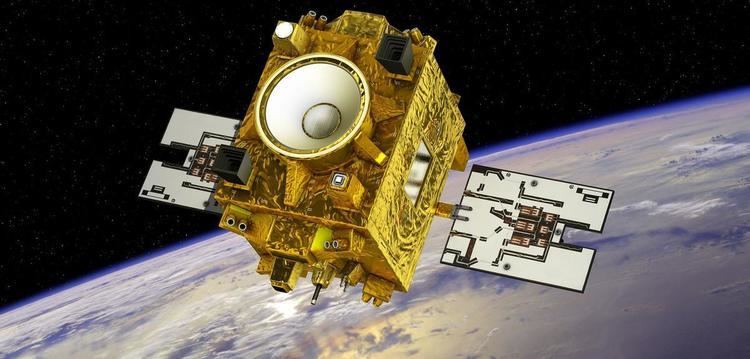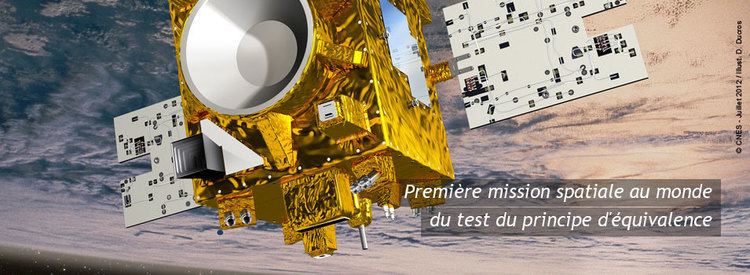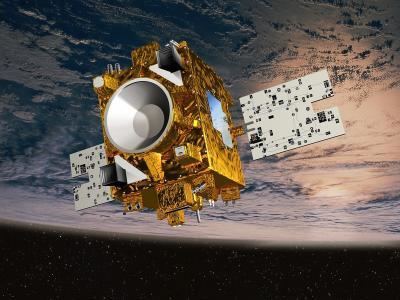Mission type Physics SATCAT no. 41457 Launch date 25 April 2016 Manufacturer CNES Operator CNES | COSPAR ID 2016-025B Launch mass 303 kg (668 lb) Rocket Soyuz-2 (VS-14) Bus Myriade | |
 | ||
Mission duration Planned: 2 years
Elapsed: 10 months, 10 days Similar Sentinel‑1B, Proteus, ESRO 2B, Jupiter Ganymed, Athena‑Fidus | ||
The Micro-Satellite à traînée Compensée pour l'Observation du Principe d'Equivalence (MICROSCOPE) is a 300-kilogram (660 lb) class minisatellite operated by CNES to test the universality of free fall (the equivalence principle) with a precision to the order of 10−15, 100 times more precise than can be achieved on Earth. It was launched on 25 April 2016 alongside Sentinel-1B and other small satellites.
Contents

Experiment

To test the equivalence principle (i.e. the similarity of free fall for two bodies of different composition in an identical gravity field), two differential accelerometers are used successively. If the equivalence principle is verified, the two sets of masses will be subjected to the same acceleration. If different accelerations have to be applied, the principle will be violated.

The principal experiment is the Twin-Space Accelerometer for Gravity Experiment (T-SAGE), built by ONERA and composed of two identical accelerometers and their associated, concentric cylindrical masses. One accelerometer serves as a reference and contains two platinum-rhodium alloy masses, while the other is the test instrument and contains one mass of platinum-rhodium alloy and another mass of titanium alloy (TA6V). The masses are maintained within their test areas by electrostatic repulsion, designed to render them motionless with respect to the satellite.

It was necessary to create a thermally benign environment for the accelerometers. To that end, they are mounted on the end of the satellite bus away from the Sun; the chosen Sun-synchronous orbit provides a very stable thermal environment; and to maintain thermal isolation from the satellite itself, the modes of thermal connection were modelled and wire connections were minimised.
Satellite control

The satellite employs a Drag-Free Attitude Control System (DFACS), also called the Acceleration and Attitude Control System (AACS), that uses a double-redundant primary and backup set of four microthrusters (sixteen total) to "fly" the satellite around the test masses. This system takes into account the dynamic forces acting on the spacecraft, including aerodynamic forces due to residual atmosphere, solar pressure forces due to photon impacts, electromagnetic forces within the Earth's magnetosphere, and gravitational forces in the Sun-Earth-Moon system.
Launch

MICROSCOPE was successfully launched on 25 April 2016 at 21:02:13 UTC from the Guiana Space Centre outside Kourou, French Guiana. It was carried by a Soyuz-STA booster with a Fregat-M upper stage. Other payloads on this flight were the European Space Agency's Sentinel-1B Earth observation satellite and three CubeSats: OUFTI-1 from the University of Liège, e-st@r-II from the Polytechnic University of Turin, and AAUSAT-4 from Aalborg University.
